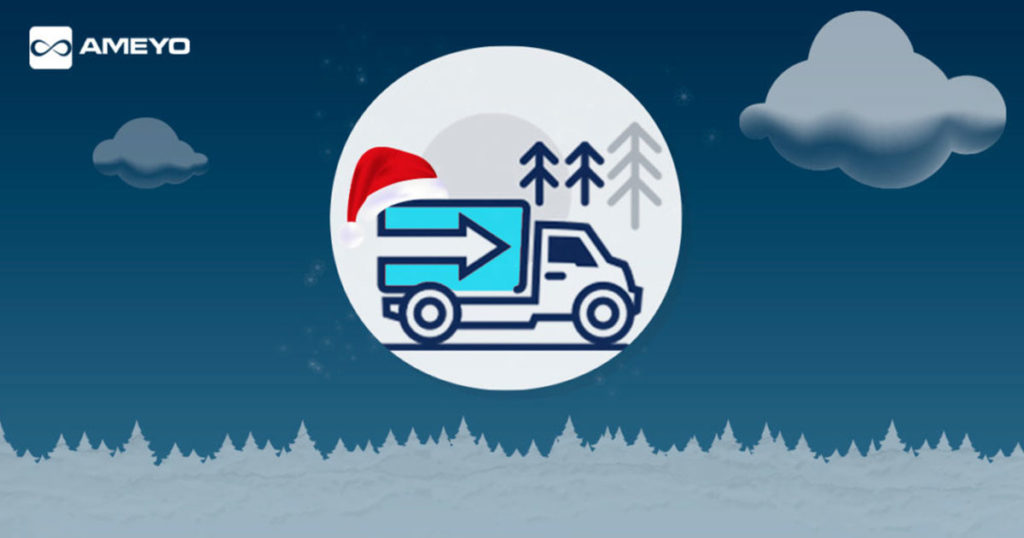Holiday seasons are the busiest time of the year for the logistics Industry. And, does that change because of the unprecedented crisis of COVID-19? Yes, we are sure to see a surge in demand for making contactless deliveries. The in-store visits have reduced significantly, kicking off online selling. With e-commerce taking over this year, retailers will have to be prepared with the inventory well in advance to emerge out as the winner of this holiday season.
So, does your logistics company have the capacity to make all the deliveries and handle the call center operations effectively? With most brands shooting out the message of delayed expected delivery, it sure will be a spike in inbound call volume. So, how are you preparing for the holiday logistics rush?
Creating an easy and effortless customer experience is easier said than done. There are certain challenges like agents will have more repetitive tasks on their plate, the contact centers will be bombarded with inbound queries, brands will have to hire additional staff, management of reverse logistics, etc. You will have to hire additional seasonal staff to cater to the needs of the customers. So, you can provide a high level of customer support this holiday season by using an effective remote contact center solution.
How does a Remote Contact Center Solution solve these challenges?
With a remote contact center solution, the logistics industry can bridge the gap between vendors and customers by delivering a seamless customer journey across touchpoints.
Deliver Omnichannel Customer Experience
Integrate your remote contact center with all the channels like call, email, chat, social media, messaging platforms, in-app chat, etc. Let the customers connect with the vendors through their preferred channels, making it easy for them to reach and find related information.
With a surge in inbound queries, you can automate the workflow and inform the customers about delayed deliveries even before they reach out. Walking a step ahead of the customers can turn out to be a game-changer. Sending timely notifications via WhatsApp, reminders through email, voice blast about the shipment, or emergency alerts helps customers stay abreast of all the information.
Scale as the Business Grows
Are you thinking of scaling your business this holiday season? Are you worried about huge capital investments like infrastructure cost and operational overheads? A remote contact center solution is the answer for your business.
With its pay as you go model, it allows you to seamlessly scale up or down your business operations without worrying about operational costs. Working from anywhere, any device, and any browser gives you a navigation card through a vast talent pool across geographies. With the flexibility to grow your business, you can easily manage the surge in inbound call volume by hiring additional customer support specialists.
Priority-based Routing
A customer whose product is due for delivery in the next 4 hours would become a priority customer. But, how would you ensure that the customer is routed to the relevant agent when they call? With a smart routing strategy, backed by an intelligent customer identification process, you can now easily filter the customers to be routed on priority.
A customer with a general query automatically gets routed to the agent handling general or first-level queries, clearing up the queue for elite customers.
Integrating your Inventory with CRM Application
A remote contact center ensures easy integration of the logistics applications with in-house or third-party CRM that helps track and maintain customer information. This establishes sync between the order management system and CRM, allowing the agents to retrieve important information and resolve customer issues faster.
If a customer has an unresolved issue from the past, the agent can quickly refer to the notes mapped in the CRM and drive the contextual conversation to address the customer’s grievances.
Managing Reverse Logistics
It often becomes a challenge for the vendors to manage reverse logistics, further escalating if not addressed immediately.
If the customer chooses COD and refuses to accept the product at the time of delivery, with a remote contact center. In that case, the delivery agent can input this information in the order management system which is mapped in the CRM automatically. The customer receives a call from the business to confirm the same, and after the confirmation, the product status changes to reverse logistics.
